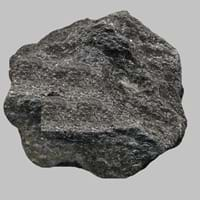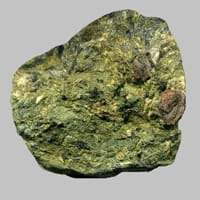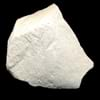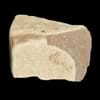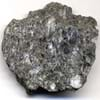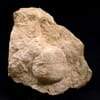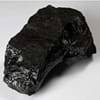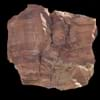Definition
A ganister is a hard, fine-grained quartzose sandstone or orthoquartzite which is basically used in the manufacture of silica brick typically used to line furnaces and is a type of sedimentary rocks.
Greenschist is a metamorphic rock that is formed under lowest temperatures and pressures and is usually produced by regional metamorphism
Discoverer
Unknown
Unknown
Etymology
From gan′is-ter i.e a hard, close-grained siliceous stone, often forming the stratum which underlies a coal-seam
From minerals such as chlorite, serpentine, and epidote, and platy minerals such as muscovite and platy serpentine which are green in color
Class
Sedimentary Rocks
Metamorphic Rocks
Sub-Class
Durable Rock, Hard Rock
Durable Rock, Medium Hardness Rock
Group
Not Applicable
Not Applicable
Other Categories
Coarse Grained Rock, Fine Grained Rock, Opaque Rock
Coarse Grained Rock, Fine Grained Rock, Medium Grained Rock, Opaque Rock
Texture
Clastic, Granular, Rough
Foliated, Platy
Color
Beige, Black, Brown, Colourless, Cream, Dark Brown, Green, Grey, Light Green, Light to Dark Grey, Pink, Red, White, Yellow
Dark Greenish - Grey, Green
Durability
Durable
Durable
Scratch Resistant
Yes
Yes
Appearance
Rough
Layered and Shiny
Interior Uses
Decorative Aggregates, Entryways, Flooring, Homes, Interior Decoration
Bathrooms, Countertops, Decorative Aggregates, Entryways, Homes, Interior Decoration
Exterior Uses
As Building Stone, Garden Decoration, Office Buildings, Paving Stone
As Building Stone, As Facing Stone, Paving Stone, Garden Decoration, Office Buildings
Other Architectural Uses
Curbing
Curbing
Construction Industry
Cement Manufacture, Construction Aggregate, for Road Aggregate, Production of Glass and Ceramics, Raw material for the manufacture of mortar
As Dimension Stone, Building houses or walls, Cement Manufacture, Cutting Tool, for Road Aggregate, Roadstone
Medical Industry
Not Yet Used
Not Yet Used
Antiquity Uses
Artifacts, Monuments, Sculpture, Small Figurines
Artifacts
Commercial Uses
An Oil and Gas Reservoir, In aquifers, Petroleum reservoirs, Soil Conditioner, Source of Magnesia (MgO), Tombstones
Blackboards, Manufacture of tools, Writing Slates
Types
Not Available
Not Available
Features
Available in Lots of Colors and Patterns, Generally rough to touch, Very fine grained rock
Easily splits into thin plates, Smooth to touch
Archaeological Significance
Monuments
Used
Not Yet Used
Famous Monuments
Data Not Available
Not Applicable
Sculpture
Used
Not Yet Used
Famous Sculptures
Data Not Available
Not Applicable
Pictographs
Not Used
Used
Petroglyphs
Not Used
Used
Figurines
Used
Not Yet Used
Formation
Ganisters are formed by the destruction of easily weathered minerals mainly feldspar, within the surface horizon of soil by soil-forming processes.
Greenschist is medium grade metamorphic rock, formed by the metamorphosis of mudstone or shale, or some types of igneous rock, when it is subjected to higher temperatures and pressures.
Mineral Content
Calcite, Clay, Clay Minerals, Feldspar, Micas, Quartz
Alusite, Amphibole, Biotite, Chlorite, Epidote, Feldspar, Garnet, Graphite, Hornblade, Kyanite, Micas, Muscovite or Illite, Porphyroblasts, Quartz, Serpentine, Sillimanite, Staurolite, Talc
Compound Content
Aluminium Oxide, CaO, Iron(III) Oxide, Potassium Oxide, MgO, Sodium Oxide, Silicon Dioxide
CaO, Carbon Dioxide, MgO
Types of Metamorphism
Not Applicable
Not Applicable
Types of Weathering
Biological Weathering
Biological Weathering, Chemical Weathering
Types of Erosion
Water Erosion, Wind Erosion
Chemical Erosion, Coastal Erosion, Glacier Erosion, Sea Erosion
Grain Size
Coarse or Fine
Medium to Fine Coarse Grained
Fracture
Splintery
Conchoidal
Porosity
Highly Porous
Highly Porous
Compressive Strength
Not Available
Specific Gravity
2.2-2.8
2.5-2.9
Transparency
Opaque
Opaque
Density
2.2-2.8 g/cm3
2.8-2.9 g/cm3
Specific Heat Capacity
Not Available
Resistance
Heat Resistant, Impact Resistant, Pressure Resistant
Impact Resistant, Pressure Resistant, Water Resistant
Deposits in Eastern Continents
Asia
China, India, Kazakhstan, Mongolia, Russia, Uzbekistan
Afghanistan, Bangladesh, Bhutan, China, India, Japan, Kazakhstan, Malaysia, Pakistan, Russia, Thailand, Turkey, Vietnam
Africa
Namibia, Nigeria, South Africa
Egypt, Ethiopia, Morocco, Nigeria, South Africa
Europe
Austria, Denmark, Germany, Great Britain, Netherlands, Norway, Poland, Sweden, Switzerland, United Kingdom
Austria, England, France, Georgia, Germany, Italy, Liechtenstein, Monaco, Norway, Slovenia, Spain, Sweden, Switzerland
Others
Greenland
Not Yet Found
Deposits in Western Continents
North America
Canada, USA
Canada, Costa Rica, Cuba, Mexico, Panama, USA
South America
Brazil
Brazil, Colombia, Guyana
Deposits in Oceania Continent
Australia
New South Wales, New Zealand
New South Wales, New Zealand, Queensland
All about Ganister and Greenschist Properties
Know all about Ganister and Greenschist properties here. All properties of rocks are important as they define the type of rock and its application. Ganister belongs to Sedimentary Rocks while Greenschist belongs to Metamorphic Rocks.Texture of Ganister is Clastic, Granular, Rough whereas that of Greenschist is Foliated, Platy. Ganister appears Rough and Greenschist appears Layered and Shiny. The luster of Ganister is dull while that of Greenschist is shiny. Ganister is available in beige, black, brown, colourless, cream, dark brown, green, grey, light green, light to dark grey, pink, red, white, yellow colors whereas Greenschist is available in dark greenish - grey, green colors. The commercial uses of Ganister are an oil and gas reservoir, in aquifers, petroleum reservoirs, soil conditioner, source of magnesia (mgo), tombstones and that of Greenschist are blackboards, manufacture of tools, writing slates.
